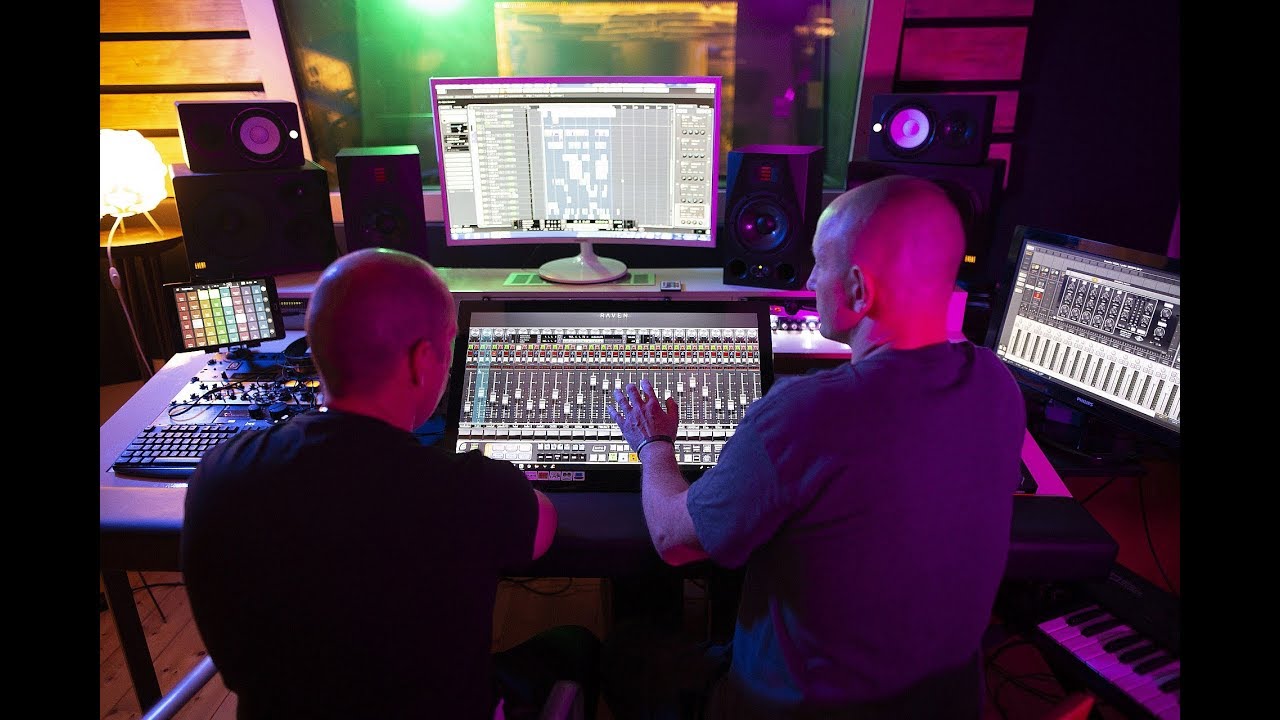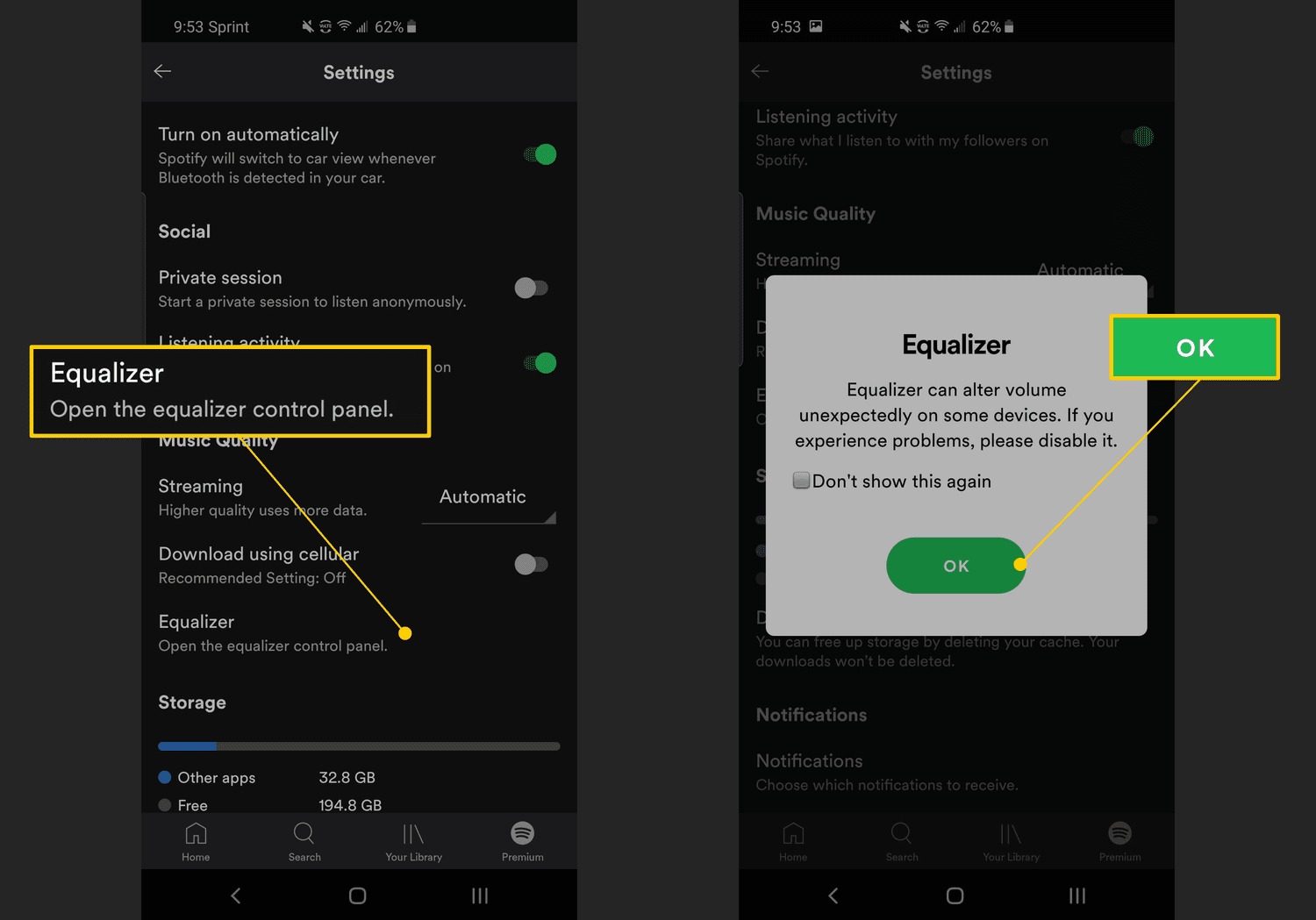Home>Production & Technology>Remix>How To Make A Remix On Spotify


Remix
How To Make A Remix On Spotify
Modified: February 19, 2024
Learn how to create a captivating remix on Spotify. Discover the best tips and techniques to transform your favorite songs into innovative remixes.
(Many of the links in this article redirect to a specific reviewed product. Your purchase of these products through affiliate links helps to generate commission for AudioLover.com, at no extra cost. Learn more)
Table of Contents
- Introduction
- Step 1: Choosing the Original Song
- Step 2: Acquiring the Necessary Software and Tools
- Step 3: Importing the Original Song into a Digital Audio Workstation (DAW)
- Step 4: Analyzing the Original Song
- Step 5: Selecting the Elements to Remix
- Step 6: Creating a Remix Version
- Step 7: Adding Effects and Adjustments
- Step 8: Finalizing the Remix
- Step 9: Exporting the Remix
- Conclusion
Introduction
Remixing has become a popular practice in the music industry, allowing artists and producers to reinvent existing songs and create unique versions that captivate listeners. With the rise of streaming platforms like Spotify, remixes have gained even more prominence, giving artists the opportunity to reach a wider audience and attract new fans. If you’re interested in trying your hand at making a remix on Spotify, this article will guide you through the process step-by-step, from choosing the original song to exporting your finished remix.
Creating a remix is not only a way to showcase your creativity, but it can also be a fun and rewarding experience. By adding your own twist to a song, you can breathe new life into it and offer a fresh perspective to listeners. However, remixing isn’t as simple as just changing a few elements of a track. It requires careful analysis, thoughtful selection of elements to remix, and skillful execution to create a remix that stands out.
In this article, we’ll explore the essential steps involved in making a remix on Spotify. From acquiring the necessary software and tools to finalizing and exporting your remix, we’ll cover everything you need to know to get started on your remixing journey. So, if you’re ready to unleash your creativity and make waves in the world of music, let’s dive into the exciting world of remixing on Spotify!
Step 1: Choosing the Original Song
The first step in making a remix on Spotify is selecting the original song you want to work with. This is a crucial decision, as the original song will serve as the foundation for your remix. Here are a few tips to help you choose the right track:
- Familiarity: Choose a song that you are familiar with and enjoy listening to. This will make the remixing process more enjoyable and help you connect with the music on a deeper level.
- Genre and Style: Consider the genre and style of the original song. It’s essential to choose a track that aligns with your remixing style and showcases your strengths.
- Separable Elements: Analyze the original song to identify separable elements such as vocals, instrumentals, and rhythms. These elements will be the building blocks you can work with when creating your remix.
- Acquiring the Rights: Ensure that you have the necessary permissions and rights to use the original song for remixing. This is crucial to avoid any legal issues in the future.
Once you have chosen the original song, it’s time to move on to the next step – acquiring the necessary software and tools for remixing. In the next section, we’ll explore the essential tools you’ll need to create your remix.
Step 2: Acquiring the Necessary Software and Tools
To create a remix on Spotify, you’ll need the right software and tools to work with. Here are some essential software and tools you should consider acquiring:
- Digital Audio Workstation (DAW): A DAW is the primary software you’ll use to create your remix. There are various options available, such as Ableton Live, FL Studio, Logic Pro, and more. Choose a DAW that suits your workflow and preferences.
- Samples and Sound Libraries: Alongside the DAW, acquiring high-quality samples and sound libraries can greatly enhance your remix. These libraries provide a wide range of professionally recorded instrumental and vocal samples that you can incorporate into your remix.
- Plugins and Effects: Plugins and effects play a crucial role in shaping the sound of your remix. Consider investing in plugins for EQ, compression, reverb, delay, and other essential effects to add depth and polish to your remix.
- MIDI Controllers: If you prefer a more hands-on approach, a MIDI controller can be a valuable addition. It allows you to manipulate virtual instruments and control various parameters within your DAW, making the remixing process more tactile and intuitive.
- Audio Interface: An audio interface is a device that connects your computer to professional-grade audio equipment. While not essential, an audio interface can improve the sound quality of your remix, especially if you plan on recording external instruments or vocals.
Before acquiring any software or tools, take some time to research and compare options based on your budget, needs, and the specific features offered. Many software companies offer free trial versions, allowing you to test them out before making a purchase.
Once you have acquired the necessary software and tools, it’s time to move on to the next step – importing the original song into your chosen DAW. This will be covered in detail in the following section.
Step 3: Importing the Original Song into a Digital Audio Workstation (DAW)
Now that you have chosen your original song and acquired the necessary software and tools, it’s time to import the original song into your chosen Digital Audio Workstation (DAW). Follow these steps to get started:
- Open your DAW: Launch your DAW software on your computer. If you’re new to the software, take some time to familiarize yourself with its interface and features.
- Create a new project: Create a new project within your DAW. Set the project settings according to your preferences, such as sample rate, bit depth, and tempo.
- Import the original song: Locate the original song file on your computer and import it into your DAW. Most DAWs support common audio file formats like MP3, WAV, and AIFF.
- Arrange the original song: Once imported, arrange the original song in the timeline of your DAW. This will help you visualize the structure and sections of the song as you work on your remix.
With the original song imported into your DAW, you now have a foundation to work with. You can now begin analyzing the original song to identify the elements you want to remix. We will delve into this process in the next step.
It’s worth noting that some DAWs offer advanced features, such as automatic tempo detection and warping, which can help align the original song to the project tempo. These features can be particularly useful when working with songs that have varying tempos or time signatures.
Now that the original song has been imported and arranged in your DAW, you’re ready to move on to the next step – analyzing the original song to select the elements to remix. This will be covered in detail in the following section.
Step 4: Analyzing the Original Song
Once you have imported the original song into your Digital Audio Workstation (DAW), the next step in making a remix on Spotify is analyzing the song. This analysis will help you identify the specific elements of the song that you want to remix and give you a better understanding of its structure and composition. Here are some key aspects to consider during the analysis:
- Song Structure: Pay attention to the song’s structure, including the intro, verses, choruses, and bridge. Understanding the song’s arrangement will help you plan your remix and decide where to introduce changes or variations.
- Separable Elements: Identify the different elements that make up the song, such as vocals, drums, basslines, melodies, and any other instruments. This step is crucial in selecting the specific elements you want to remix or emphasize in your remix.
- Musical Themes and Hooks: Take note of any memorable musical themes, catchy hooks, or unique motifs in the original song. These can serve as the foundation for your remix’s main elements or be reimagined in a fresh and creative way.
- Tonal and Rhythmic Characteristics: Pay attention to the tonal and rhythmic characteristics of the original song. This includes the key signature, chord progressions, time signature, and any notable rhythmic patterns. Understanding these aspects will help you create harmonically and rhythmically cohesive remix elements.
Listening to the original song multiple times and taking detailed notes can be helpful during the analysis process. It’s also a good idea to visualize the song’s waveform and spectrogram within your DAW to gain further insights into its sonic characteristics.
By thoroughly analyzing the original song, you will have a clear direction in terms of the elements you want to remix and the creative ideas you can explore. The next step will guide you through the process of selecting and manipulating these elements to create your remix version.
Now that you have completed the analysis of the original song, you are ready to move on to the next step – selecting the specific elements to remix. This will be covered in detail in the following section.
Step 5: Selecting the Elements to Remix
After analyzing the original song, it’s time to select the specific elements that you want to remix. This step is crucial in infusing your creative touch and giving your remix a unique identity. Here’s how you can go about selecting the elements:
- Vocals: If the original song has vocals, consider whether you want to keep them as the main focus or create a new vocal arrangement. You can choose to pitch-shift, chop, or manipulate the vocals to create interesting effects.
- Instrumentation: Decide which instruments from the original song you want to highlight or modify. You can choose to emphasize certain melodies, add new instrument layers, or completely change the instrumentation to create a fresh sound.
- Basslines: Consider whether you want to alter or enhance the existing basslines in the original song. You can experiment with different bass patterns, tones, or even create entirely new basslines that complement your remix’s style.
- Drums and Percussion: Evaluate the drums and percussion elements in the original song. You can choose to add new drum patterns, layer additional percussion, or apply creative effects to give your remix a distinct rhythmic character.
- Arrangement and Structure: Decide how you want to rearrange the sections of the song. You can extend certain parts, add new transitions, or even introduce entirely new sections to create a dynamic and engaging remix.
Remember that remixing is not about simply copying and pasting elements from the original song. It’s about putting your artistic interpretation and personal touch on the music. Experiment with different combinations of elements, explore diverse genres, and push the boundaries of creativity.
As you make your selections, keep in mind the target audience and the overall vibe you want your remix to portray. Strive for a balance between staying true to the essence of the original song and adding your own unique spin.
With the elements selected, you’re ready to move on to the next step, where you’ll actually get to work on creating your remix. This is where your creativity truly shines, so let’s dive in and start remixing!
Step 6: Creating a Remix Version
Now that you have selected the specific elements you want to remix, it’s time to create your remix version. This step allows you to unleash your creativity and bring your unique vision to life. Follow these guidelines to effectively create your remix:
- Experiment with Arrangements: Begin by experimenting with different arrangements of the selected elements. You can start by creating a basic structure and then gradually add or remove elements to shape the remix according to your desired direction.
- Apply Creative Techniques: Use various creative techniques, such as chopping, reversing, time-stretching, or applying effects, to transform the selected elements. This will add depth and uniqueness to your remix, giving it a distinct sound and feel.
- Create Variations: Don’t hesitate to create variations of the original elements. You can introduce new melodies, alter rhythms, or add unexpected twists to surprise the listeners and make your remix stand out.
- Experiment with Tempo and Key Changes: Consider experimenting with tempo and key changes to give your remix a fresh perspective. Gradual tempo adjustments or key modulations can add excitement and create engaging sonic transformations.
- Add Creative Flourishes: Incorporate your own creative flourishes and stylistic touches throughout the remix. This might include unique sound effects, vocal chops, rhythmic variations, or any other elements that showcase your artistic flair.
Throughout the remixing process, trust your instincts and let your creativity guide you. Don’t be afraid to take risks and try out new ideas. Remember, the goal is to create a remix that stands out and engages the listeners in a unique way.
Regularly listen to your remix-in-progress with fresh ears and make adjustments along the way. Take breaks when needed to gain a new perspective and to prevent ear fatigue. A well-crafted remix often requires iterations and fine-tuning to achieve the desired outcome.
Remember that the remix should retain some recognizable elements from the original song while incorporating your own artistic interpretation. Striking this balance will help listeners connect with the familiar while enjoying the fresh and innovative elements you bring to the table.
Once you are satisfied with your remix version, it’s time to move on to the next step and add effects and adjustments to enhance the overall production. This will be covered in detail in the following section.
Step 7: Adding Effects and Adjustments
After creating the core elements of your remix, it’s time to add effects and make adjustments to enhance the overall production. This step allows you to polish your remix and bring it to its full potential. Follow these steps to effectively add effects and make necessary adjustments:
- Equalization (EQ): Use EQ to balance the frequency spectrum of each individual element in your remix. This helps ensure clarity and prevents any overlapping or muddiness in the mix. Experiment with EQ settings to bring out the desired characteristics of each element.
- Compression: Apply compression to control the dynamic range of certain elements. This helps even out the volume levels and adds consistency to the mix. Consider using compression on elements such as vocals, drums, or instruments that need more control and presence.
- Reverb and Delay: Use reverb and delay to add depth and spaciousness to your remix. Apply these effects selectively to specific elements or sections to create a sense of ambiance and dimension. Adjust the parameters to achieve the desired blend and decay for a natural or creative effect.
- Automation: Make use of automation to add movement and dynamics to different elements throughout your remix. This can be applied to parameters like volume, panning, effects, or any other parameter that you want to adjust over time. Automation adds an extra layer of excitement and interest to your remix.
- Additional Effects: Experiment with other effects such as modulation, distortion, filtering, or any other creative effects that fit the style of your remix. These effects can add character and uniqueness to your sound, further enhancing the overall production.
- Level Balancing: Take the time to balance the levels of each element in your remix. Ensure that no element is overpowering or getting lost in the mix. Use your ears and reference other professionally mixed tracks to achieve a balanced and cohesive sound.
As you add effects and make adjustments, constantly refer back to the original vision you had for your remix. Ensure that the effects you apply enhance the overall production without overshadowing the creativity and uniqueness of your remix.
Remember to regularly check your mix on different playback systems (e.g., headphones, speakers, car stereo) to ensure it translates well across different listening environments.
Once you are satisfied with the added effects and adjustments, it’s time to proceed to the final step of the remixing process – exporting your remix. We’ll cover this step in detail in the following section.
Step 8: Finalizing the Remix
After creating and polishing your remix, it’s time to take the final steps to ensure it is ready for release. Finalizing the remix involves making any necessary tweaks and preparing it for distribution. Follow these steps to complete the finalization process:
- Quality Check: Conduct a thorough quality check of your remix. Listen to the entire track multiple times, paying attention to any potential issues such as clipping, distortion, or any other audio artifacts. Fix any noticeable problems to ensure a clean and professional sounding remix.
- Mastering: Consider applying mastering techniques to your remix to ensure it sounds balanced, cohesive, and competitive with other commercial releases. If you’re not confident in your mastering skills, you may want to consider hiring a professional mastering engineer to give your remix the final polish it deserves.
- Metadata and Artwork: Prepare the necessary metadata for your remix, including title, artist name, album name (if applicable), and any other pertinent information. Additionally, create or update the artwork for your remix, ensuring it meets the required specifications and accurately represents the remix and its concept.
- Preparing for Distribution: Decide on your distribution strategy. Explore options such as uploading your remix to a digital distribution platform, submitting it to remix competitions, or sharing it on your own website or social media platforms. Research and follow the guidelines provided by each platform to ensure a smooth distribution experience.
- Promotion: Once your remix is finalized and ready for release, create a marketing plan to promote your remix. Utilize social media, online communities, music blogs, playlists, and any other platforms that can help expose your remix to a wider audience. Consider collaborating with other artists, participating in remix contests, or reaching out to music influencers to increase awareness of your remix.
Remember that finalizing the remix is not only about the technical aspects but also about ensuring that it resonates with your audience. Aim for a remix that captivates listeners, evokes emotions, and showcases your creative expression.
By following these finalization steps, you’re taking the necessary measures to ensure that your remix is in its best form and ready to be shared with the world. The next and final step in the process is exporting the remix, which is covered in detail in the following section.
Step 9: Exporting the Remix
After finalizing your remix, the next step is to export it into a suitable format for sharing and distribution. Exporting ensures that your remix is in a high-quality format that can be easily uploaded and played across various platforms. Follow these steps to export your remix:
- Choose the Export Format: Determine the format in which you want your remix to be exported. Common formats for sharing and distribution include WAV, MP3, or AIFF. Consider the platform requirements and the desired balance between file size and audio quality.
- Set Output Parameters: Configure the output parameters for your export. This includes selecting the bit depth, sample rate, and the overall audio quality. Higher settings generally result in better audio fidelity but can also lead to larger file sizes.
- Normalize the Mix: Apply normalization to ensure that the overall loudness of your remix is consistent with industry standards. This helps prevent your remix from sounding too quiet in comparison to other tracks.
- Name and Save the Export File: Choose a suitable file name that reflects the remix, including the artist name, track title, and any other relevant information. Select the destination folder where you want to save the export file.
- Double-check Export Settings: Before finalizing the export, double-check the export settings to ensure that they align with your desired specifications. Take a moment to verify the file format, bit depth, sample rate, and normalize settings.
- Export the Remix: Initiate the export process in your Digital Audio Workstation (DAW) by clicking the export or render button. Wait for the export to complete, which may take some time depending on the length and complexity of your remix.
- Listen to the Exported Remix: After the export is complete, take the time to listen to the exported file to ensure that it sounds as intended. Pay attention to any possible quality issues or artifacts that might have occurred during the export process.
Once you are satisfied with the exported remix, make a backup of the file and ensure that it is safely stored. This backup will be useful if you need to make any changes or if you encounter any issues during the distribution process.
Congratulations! You have successfully completed the process of making a remix on Spotify. The final step is to distribute and promote your remix across various platforms to share it with your audience and gain recognition for your creative work.
Remember to track the performance of your remix, engage with your audience, and continue honing your remixing skills for future projects. Enjoy the journey and have fun connecting with listeners through your unique remix creations!
Conclusion
Creating a remix on Spotify is an exciting and rewarding endeavor that allows you to showcase your creativity and reimagine existing songs in your own unique style. Throughout the process, we have explored the essential steps involved in making a remix, from choosing the original song to exporting the final product. Let’s recap what we’ve covered:
1. We started by emphasizing the importance of choosing the right original song, considering factors such as familiarity, genre, and separable elements.
2. We then discussed the acquisition of necessary software and tools, including a Digital Audio Workstation (DAW), samples, plugins, MIDI controllers, and audio interfaces.
3. The next step was importing the original song into your chosen DAW, arranging it in the timeline, and ensuring it aligns with your project tempo.
4. Analyzing the original song allowed us to understand its structure, separable elements, musical themes, and tonal characteristics.
5. Selecting the elements to remix required careful consideration of vocals, instrumentation, basslines, drums, and arrangement.
6. Creating a remix version involved experimenting with arrangements, applying creative techniques, and creating variations while staying true to your artistic vision.
7. Adding effects and adjustments enhanced the overall production, utilizing EQ, compression, reverb, delay, automation, and other creative tools.
8. Finalizing the remix focused on conducting a quality check, mastering if necessary, preparing metadata and artwork, and planning the distribution and promotion strategy.
9. Exporting the remix involved choosing the right format, setting output parameters, normalizing the mix, and saving the export file for distribution.
By following these steps and infusing your own creative style, you’ll create a remix that stands out and connects with listeners. Remember to consider the target audience, pay attention to detail, and strive for a balance between the familiar and the innovative.
Lastly, with your remix finalized and exported, don’t forget the importance of promoting your work. Utilize various platforms, engage with your audience, and continue honing your skills to further expand your remixing journey.
So go ahead, unleash your creativity, and make waves in the world of remixing on Spotify. Embrace the art of remixing and enjoy the process of transforming existing songs into something uniquely your own. Happy remixing!











